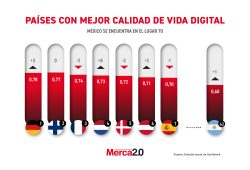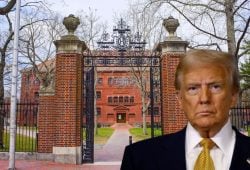Claudia Sheinbaum Pardo becomes Mexico’s first female president. The candidate for the coalition “Sigamos Haciendo Historia” (Let’s Keep Making History), formed by Morena, the Labor Party, and the Green Party, won the June 2, 2024 election by a wide margin.
According to results from the National Electoral Institute (INE), Sheinbaum secured 35,924,519 votes (59.7594%), surpassing her main rival, Xóchitl Gálvez, and Jorge Álvarez Máynez.
When will Claudia Sheinbaum take office?
The official ceremony will take place on October 1 at 9:00 a.m. in the Legislative Palace, located in the Venustiano Carranza borough of Mexico City.
In the main chamber, outgoing president Andrés Manuel López Obrador (AMLO) and Claudia Sheinbaum will enter together.
A key moment of the ceremony is the presentation of the presidential sash. This time, Ifigenia Martínez, president of the Chamber of Deputies, will hand over the tricolor sash to Claudia Sheinbaum. It will be the first time a woman places the presidential sash on another woman.
According to Article 37 of the Law on the National Shield, Flag, and Anthem, the outgoing president—López Obrador in this case—must hand the sash to the president of Congress, who will then place it over Sheinbaum’s right shoulder. This symbolic act marks the official transfer of power.
Article 37: During the ceremony for the transfer of Executive Power, after the incoming president has taken the constitutional oath, the outgoing president will hand the sash to the president of Congress, who will then give it to the president-elect, so they can place it on themselves.
ALSO READ. Andrés Manuel Lopez Obrador in 60 minutes: What did the president of Mexico say?
The cadets and Claudia Sheinbaum
In López Obrador’s 2018 inauguration, a group of cadets took part in the ceremony, standing behind the president, with one assisting him in putting on the presidential sash.
This time, cadets will again accompany the president, but they are expected to be exclusively women. Cadets from the Heroic Military Academy, Heroic Naval School, and Air Force Academy will participate in the handover of the sash, reflecting Sheinbaum’s emphasis on female empowerment.
Who are the invited guests?
At least 16 heads of state and government have confirmed their attendance, including Luiz Inácio Lula da Silva (Brazil), Gustavo Petro (Colombia), Gabriel Boric (Chile), and Miguel Díaz-Canel (Cuba).
Jill Biden, the U.S. First Lady, will attend on behalf of President Joe Biden. Leaders from Honduras, Guatemala, Paraguay, and Bolivia, along with representatives from international organizations, are also expected.
What will be Claudia Sheinbaum’s first act as President?
After the ceremony in Congress, Claudia Sheinbaum is expected to head to Mexico City’s Zócalo to deliver a speech to the nation. Although López Obrador’s presence has not been confirmed, thousands of people are expected to gather in the capital’s main square for the event.
Why is October 1 a holiday in Mexico?
October 1 is a holiday due to the change in government, marking the day Claudia Sheinbaum will take office as President of the Republic.
With 116 votes in favor and none against, the Senate approved a reform establishing October 1, every six years, as a mandatory rest day. This measure coincides with the Executive Power’s transfer, when the incoming president takes office.
The reform aligns the Federal Labor Law with Article 83 of the Constitution, ensuring that every six years, when a new president is sworn in, workers will have an official day off.
This new holiday stems from a reform to the General Law on Electoral Institutions and Procedures (LGIPE), passed by the Mexican Congress on November 17, 2021. The reform, which took effect on January 1, 2023, moves the inauguration date from December 1 to October 1.
Biography of Claudia Sheinbaum, Mexico’s first female president
She was born on June 24, 1962, in Mexico City to a family of Jewish descent, with grandparents who emigrated from Lithuania and Bulgaria.
Her father, Carlos Sheinbaum Yoselevitz, was a chemist, and her mother, Annie Pardo Cemo, is a biologist, both involved in the 1968 student movement. This legacy of social and political commitment has been a constant in Sheinbaum’s life.
From an early age, Sheinbaum showed a strong academic interest, particularly in science. She earned a physics degree from UNAM, where she also completed a master’s and a PhD in Energy Engineering.
Her doctoral thesis focused on the thermodynamic study of wood-burning stoves for rural communities, showcasing her early commitment to sustainable energy solutions.
Political career
Claudia Sheinbaum began her political career in environmental management as Mexico City’s Secretary of the Environment in 2000, under the administration of then-mayor Andrés Manuel López Obrador.
Her political journey began when López Obrador was elected mayor of Mexico City in 2000 and invited her to a meeting at a Sanborns restaurant. “What I want is to reduce pollution,” she recalled López Obrador saying. “Do you know how to do that?” recounted Natalie Kitroeff, a New York Times reporter in Mexico, in a detailed biographical profile published by the renowned newspaper.
Her tenure as Mexico City’s Secretary of the Environment wasn’t without controversy. Under López Obrador’s administration, she ordered the construction of the second floor of the Periférico highway, which sparked criticism as it was not planned as a measure to improve mobility or air quality.
Years later, Sheinbaum played a crucial role in founding Morena, the political party created by López Obrador, and was elected mayor of Tlalpan in 2015. In 2018, she broke another barrier by becoming the first woman elected as Mayor of Mexico City.
During her term as mayor, Sheinbaum faced significant challenges, including managing the aftermath of the 2017 earthquake and the 2021 Metro Line 12 tragedy.
Despite the criticism, she remained focused on improving the city’s infrastructure and public services.
Who is Claudia Sheinbaum’s husband?
Claudia Sheinbaum was previously married to Carlos Imaz, former mayor of Tlalpan and a founding member of the PRD, with whom she has two children: Mariana and Rodrigo Imaz Alarcón.
After her divorce, she began a relationship with Jesús María Tarriba Unger, a prominent physicist and financial risk analyst, and they were married in November 2023.
Claudia Sheinbaum’s personal interests
Beyond her political and scientific career, Sheinbaum has a variety of personal interests. She plays the guitar, enjoys ballet, and is an avid reader, with favorite authors including Gabriel García Márquez and Rosa Montero. She is also a football fan, supporting UNAM’s Pumas.
- Full name: Claudia Sheinbaum Pardo
- Date of birth: June 24, 1962
- Place of birth: Mexico City
- Age: 61
- Education: Bachelor’s in Physics, Master’s and PhD in Energy Engineering, all from UNAM
- Political positions: Secretary of the Environment of Mexico City (2000-2006); Mayor of Tlalpan (2015-2018); Mayor of Mexico City (2018-2023)
- Family:
Parents: Carlos Sheinbaum Yoselevitz (chemist) and Annie Pardo Cemo (biologist)
Spouse: Jesús María Tarriba Unger, physicist
Children: Mariana Imaz Sheinbaum and Rodrigo Imaz
Family background: Jewish descent, with grandparents who emigrated from Lithuania and Bulgaria
- Academic focus: Her undergraduate thesis studied the thermodynamics of a wood stove for rural Mexican communities
- Political affiliation: Morena (National Regeneration Movement)
- Personal interests: Plays guitar, studied ballet, supports the Pumas football team
- Favorite authors: Laura Restrepo, Gabriel García Márquez, Rosa Montero, Isabel Allende.
Origin and meaning of the surname Sheinbaum
Of Ashkenazi Jewish origin, the surname Sheinbaum has traveled through history and across geographies, making its mark in Mexico and spreading around the world in various forms and adaptations.
According to the website Nomorigine, “Sheinbaum is a patronymic surname derived from the Yiddish word ‘shein,’ meaning ‘beautiful,’ and the German word ‘baum,’ meaning ‘tree.’ Therefore, Sheinbaum may signify a family’s association with beautiful or fruitful trees, or it may hold an ornamental or metaphorical meaning related to character or livelihood.”
Ultimately, the name is derived from the German word ‘steinbaum,’ which translates to ‘stone tree’ in English. This surname may have been occupational, indicating an ancestor involved in the stone or masonry industry, suggesting that someone with this name may have been a stonemason or a business owner in the stone trade.










